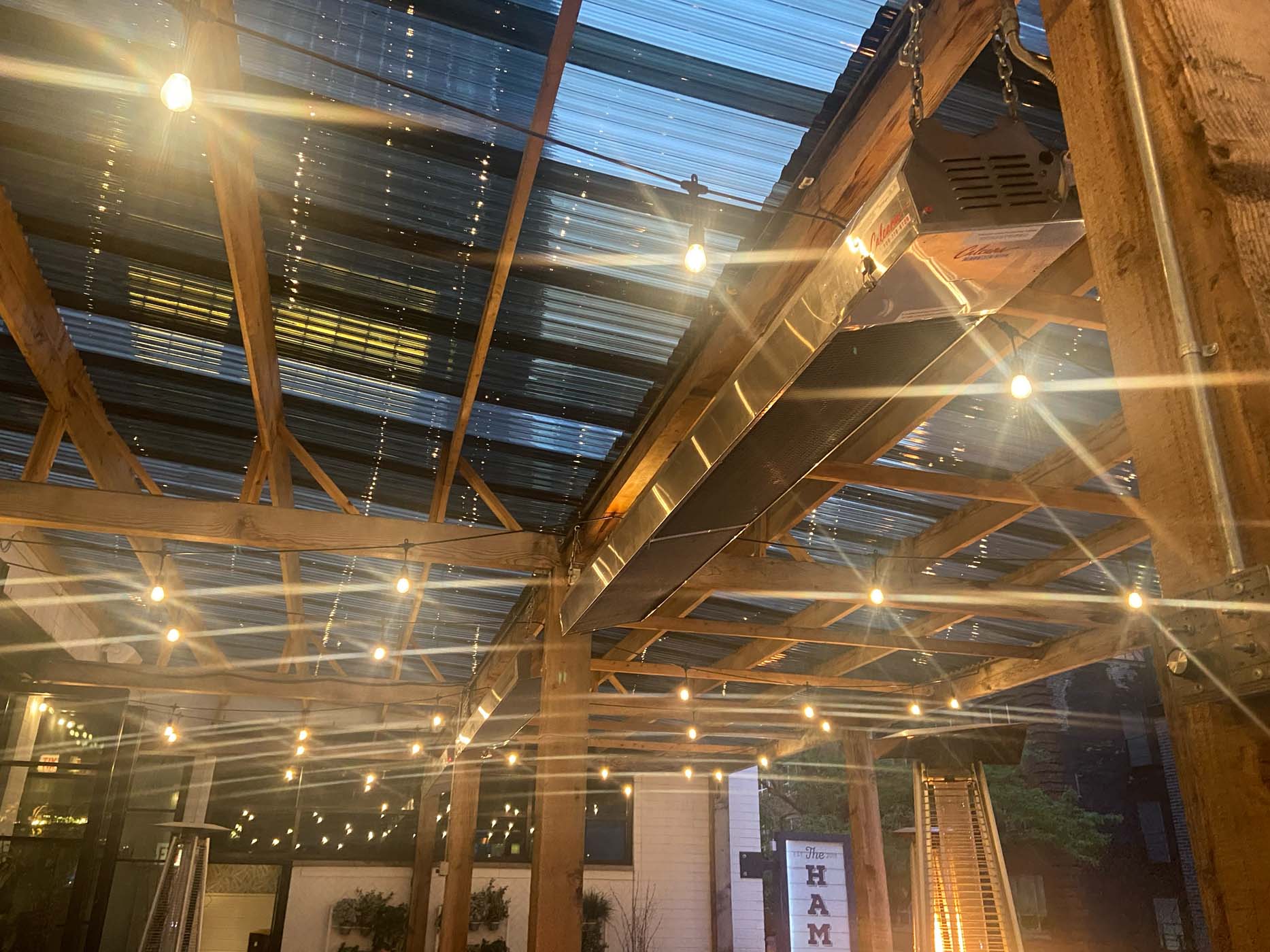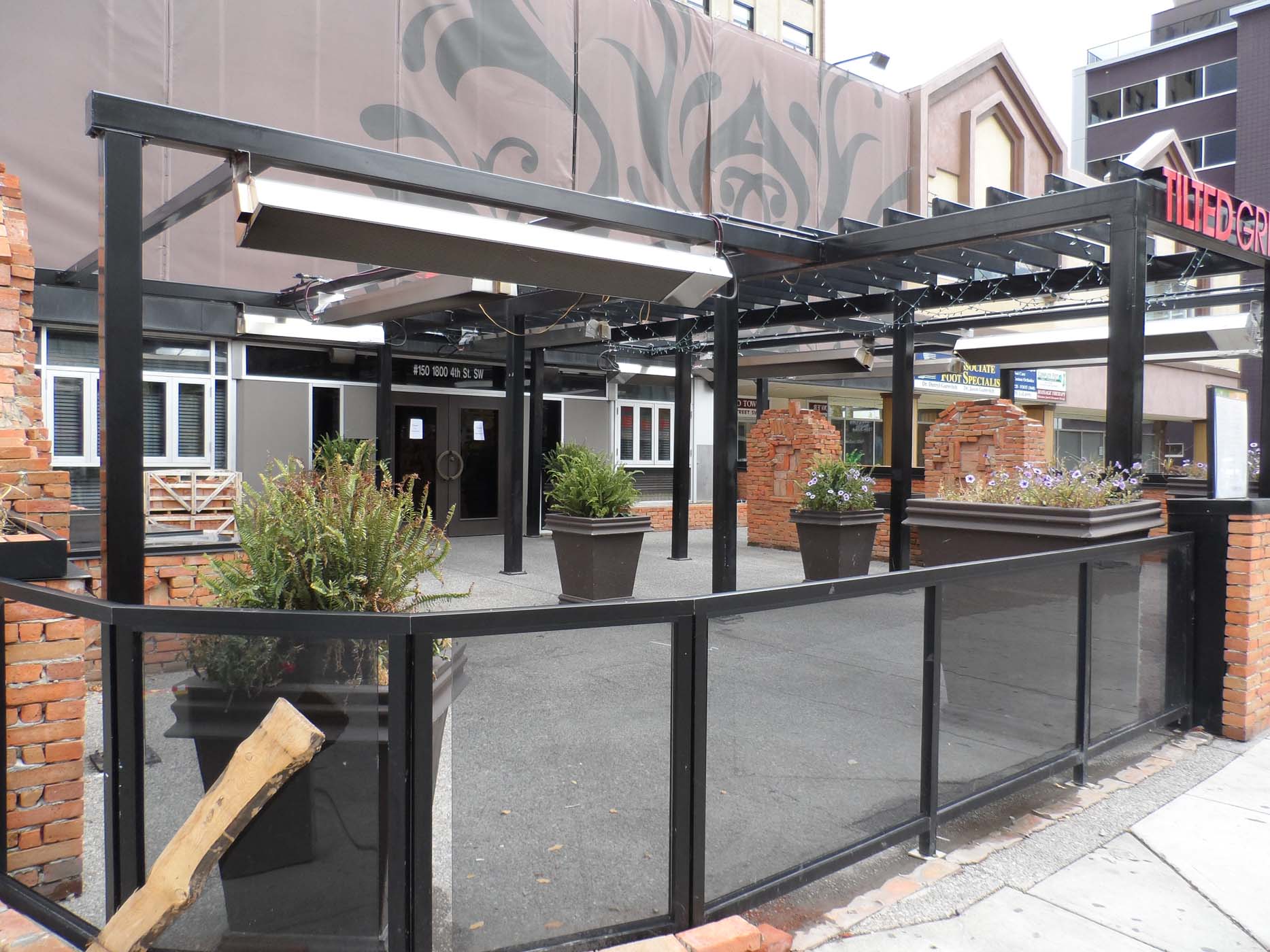Infrared heating technology has rapidly evolved from a niche solution into one of the most versatile and energy-efficient heating methods available today. Whether you’re relaxing on a restaurant patio, working in an industrial warehouse, or sitting in a comfortable office, there’s a good chance that the warmth around you is coming from an infrared heater. Unlike traditional forced-air systems that warm the air first, infrared heat works by directly heating people and objects, just like the sun’s rays. This simple yet powerful principle makes infrared heating one of the most effective ways to create comfort in a wide range of environments.
The applications for infrared heating are vast, spanning from residential backyards and commercial dining patios to warehouses, garages, manufacturing facilities, and even greenhouses. Each environment presents its own challenges, and infrared heaters deliver unique advantages suited to each one. They eliminate the need for bulky duct systems, reduce heat loss in drafty areas, and provide instant, controllable warmth exactly where it’s needed.
In this blog, we’ll explore the many places where infrared heating is used and break down the key benefits it brings to each type of space. We’ll cover how it enhances comfort, boosts energy efficiency, improves safety, and supports sustainable heating strategies across industries.
Infrared Heaters in Residential Spaces: Where They’re Used & the Benefits of Each Area
Patios & Outdoor Living Areas
One of the most common, and most appreciated, uses of infrared heaters is in residential patios and decks. These spaces often go unused during the colder months, limiting how much homeowners can enjoy their outdoor living areas. Infrared heaters solve this problem by providing targeted warmth that makes outdoor spaces usable year-round.
Unlike propane fire pits or traditional gas heaters that waste heat into the air, infrared patio heaters warm people, furniture, and even flooring surfaces directly. This makes the warmth feel more natural and consistent, even when there’s a breeze. For homeowners who value aesthetics, many infrared systems, such as Calcana’s, are ceiling- or wall-mounted to maintain clean sightlines and preserve outdoor ambiance.
Benefits:
-
Extends patio season well beyond summer.
-
Provides nearly silent, odorless heat.
-
No open flames or emissions, safe for covered spaces.
-
Requires minimal maintenance once installed.
-
Can be zoned for different seating areas.
Garages & Workshops
Infrared heaters are also a game-changer for residential garages, workshops, and hobby spaces. These areas often lack insulation or ductwork, making conventional heating inefficient or costly. Infrared heaters provide quick, efficient warmth without having to heat large volumes of air.
Home mechanics and DIYers benefit from immediate comfort while working, even if doors are open for ventilation. The heaters can be ceiling-mounted to save space, and since they don’t rely on air movement, dust and debris aren’t circulated throughout the room.
Benefits:
-
Quick, even heat in drafty environments.
-
Ideal for intermittently used spaces.
-
Reduces energy waste by heating only occupied areas.
-
Doesn’t stir up dust or fumes.
Infrared Heating in Commercial Patios & Restaurants
Outdoor Dining Spaces
Infrared heaters have become a staple in restaurants, bars, and cafés with outdoor seating. As cities embrace year-round patio culture, business owners are realizing the benefits of installing reliable heating systems that keep guests comfortable during cooler months.
Unlike portable propane units that require constant refueling, fixed-mount infrared patio heaters (like those from Calcana) connect directly to natural gas or propane lines and are designed for permanent, long-term use. They deliver steady, radiant heat across wide areas and can be controlled individually or in zones, perfect for managing energy use during off-peak hours.
Benefits:
-
Extends patio season, increasing seating capacity and revenue.
-
Provides quiet, odor-free heat with no visible flame.
-
Enhances customer comfort and satisfaction.
-
Offers flexible installation options for covered or open patios.
-
Improves ROI by maximizing usable outdoor space.
Commercial Entryways & Waiting Areas
Restaurants and retail businesses also use infrared heaters in entryways, vestibules, and outdoor waiting areas to prevent guests from feeling cold while waiting for service or transportation. Because infrared heat warms bodies directly, guests stay comfortable even if the door opens frequently or there’s a draft.
Benefits:
-
Maintains comfort at busy entrances.
-
Prevents heat loss from frequently opened doors.
-
Can be discreetly installed overhead for aesthetics.
Infrared Heaters in Industrial & Warehouse Settings
Infrared heaters excel in large industrial spaces where traditional heating systems struggle. Warehouses, manufacturing plants, aircraft hangars, and distribution centers often have high ceilings and poor insulation. Attempting to heat the air in these environments with forced-air systems is both wasteful and ineffective, warm air rises, leaving the work area cold.
Infrared heating solves this issue by delivering radiant energy directly to workers, floors, and equipment. Instead of heating the entire air volume, it warms only the people and objects in the line of sight. The result is faster comfort, less energy waste, and reduced operational costs.
Manufacturing Facilities
In production settings, infrared heaters keep workstations warm without interfering with machinery or processes. They are often used in areas where employees need focused heat, such as assembly lines or inspection stations.
Benefits:
-
Targeted heat reduces energy waste.
-
Prevents cold-related productivity drops.
-
Provides quiet, reliable operation with minimal maintenance.
Warehouses & Storage Areas
For warehouses, maintaining the right temperature isn’t just about worker comfort, it’s also about product protection. Infrared heaters provide consistent warmth that prevents condensation and protects sensitive materials like paints, adhesives, and electronics from moisture damage.
Benefits:
-
Minimizes condensation and humidity issues.
-
Low operating costs for large-volume spaces.
-
Works well with high ceilings and open floor plans.
Infrared Heating in Sports & Recreational Facilities
Infrared heating is gaining popularity in arenas, golf clubs, sports complexes, and fitness facilities. These venues require quick, even heating that can be directed where it’s needed most, spectator stands, seating areas, or open-air zones like rinks and driving ranges.
Arenas & Ice Rinks
In ice arenas, maintaining the right temperature balance is crucial. Traditional air systems can disrupt the ice surface by creating uneven air temperatures, but infrared heaters deliver top-down warmth to spectators without affecting the ice quality.
Golf Courses & Clubhouses
Infrared heaters installed on golf club patios or driving ranges allow players to enjoy the facilities year-round. For example, installations at locations like Muirfield Lakes Golf Club and other western Canadian courses show how effective infrared systems can be at extending the golf season.
Benefits:
-
Keeps spectators and guests warm without wasting energy.
-
Suitable for both indoor and outdoor recreational environments.
-
Operates quietly and safely around people and equipment.
Infrared Heating in Agricultural & Greenhouse Applications
Agriculture is another field benefiting greatly from infrared heating. In greenhouses, barns, and livestock shelters, maintaining a consistent, gentle warmth is essential for productivity and animal welfare. Infrared heat helps by delivering direct, non-drying warmth that doesn’t disturb air circulation or humidity levels.
Greenhouses
Infrared heaters promote healthy plant growth by maintaining stable temperatures near the root zone. They prevent frost, reduce condensation on leaves, and can be precisely controlled to match the needs of different crops.
Livestock Shelters & Barns
Animals benefit from the gentle, radiant warmth of infrared systems, which help keep them comfortable and reduce stress during cold months. Unlike forced-air heaters, infrared units don’t stir up dust, improving air quality and minimizing respiratory issues.
Benefits:
-
Maintains consistent warmth for crops and animals.
-
Reduces condensation and mold risk.
-
Safe, quiet, and efficient heating solution for agricultural use.
Infrared Heaters in Commercial & Retail Spaces
Beyond outdoor dining, infrared heating has applications in commercial storefronts, showrooms, and office buildings. These environments often need supplemental heating in areas that aren’t covered effectively by central HVAC systems, especially near entrances or open-layout spaces.
Infrared heaters can create localized comfort zones without overloading the building’s main heating system. Retailers often use them to make customer-facing areas feel more inviting, particularly during winter months.
Benefits:
-
Provides focused comfort in high-traffic areas.
-
Reduces strain on central HVAC systems.
-
Can be integrated seamlessly into modern architectural designs.
Infrared Heating in Automotive & Aviation Industries
Infrared heating is invaluable in environments like automotive garages, service bays, paint shops, and aircraft hangars. These spaces need powerful yet precise heating to maintain optimal working conditions.
Auto Garages & Service Bays
Infrared heaters quickly warm vehicles, tools, and technicians without blowing air or dust. This is ideal for work environments that require clean, dry heat to protect finishes or prevent condensation.
Aircraft Hangars
In aviation, maintaining consistent temperatures helps prevent condensation on sensitive aircraft components. Infrared heaters deliver the necessary warmth across large areas efficiently, even with high ceilings and constant air movement.
Benefits:
-
Provides consistent, directed warmth in large open spaces.
-
Reduces moisture-related corrosion.
-
Operates efficiently even in partially open environments.
Sizing Infrared Systems for Each Application
While infrared heaters are highly adaptable, the correct sizing and placement are critical for optimal performance. Factors like space dimensions, insulation levels, mounting height, and climate zone all affect how many heaters are needed. You can find more information on this in our other blog "How to Determine How Many Heaters You Need for Your Space" or on our Resources Page.
A professional site assessment ensures that each infrared unit delivers the right level of comfort. For example, outdoor patio installations often require zone heating to cover different seating areas, while industrial buildings may rely on high-intensity models mounted at significant heights.
Properly sized systems offer consistent coverage, reduce energy waste, and maximize comfort while minimizing costs.
Environmental & Energy Efficiency Benefits
Infrared heating contributes to sustainability in several ways. Because it directly heats objects and people rather than air, energy loss is dramatically reduced. This makes infrared systems an eco-friendly alternative to conventional gas or electric heaters.
By reducing fuel consumption and emissions, infrared systems align with energy efficiency goals and green building standards. Some systems can even integrate with renewable energy sources, further enhancing their environmental appeal.
Benefits:
-
Reduced energy consumption and operating costs.
-
Lower carbon footprint.
-
Supports green building certifications and sustainability goals.
Final Thoughts: The Universal Advantage of Infrared Heat
Infrared heating technology has moved far beyond the limits of traditional systems. From residential patios and restaurant terraces to industrial warehouses and agricultural facilities, infrared heaters bring customizable, energy-efficient warmth to nearly any environment.
The ability to deliver direct, comfortable heat without wasting energy makes infrared systems a smart investment for businesses and homeowners alike. They offer durability, efficiency, and flexibility that few other technologies can match.
As demand grows for year-round comfort and sustainable heating, infrared systems will continue to expand into new markets and applications. Wherever you go, whether it’s a café patio, a hockey arena, or a golf club, you’ll find infrared heating quietly working in the background, making every space more inviting and efficient.




Leave a comment
This site is protected by hCaptcha and the hCaptcha Privacy Policy and Terms of Service apply.